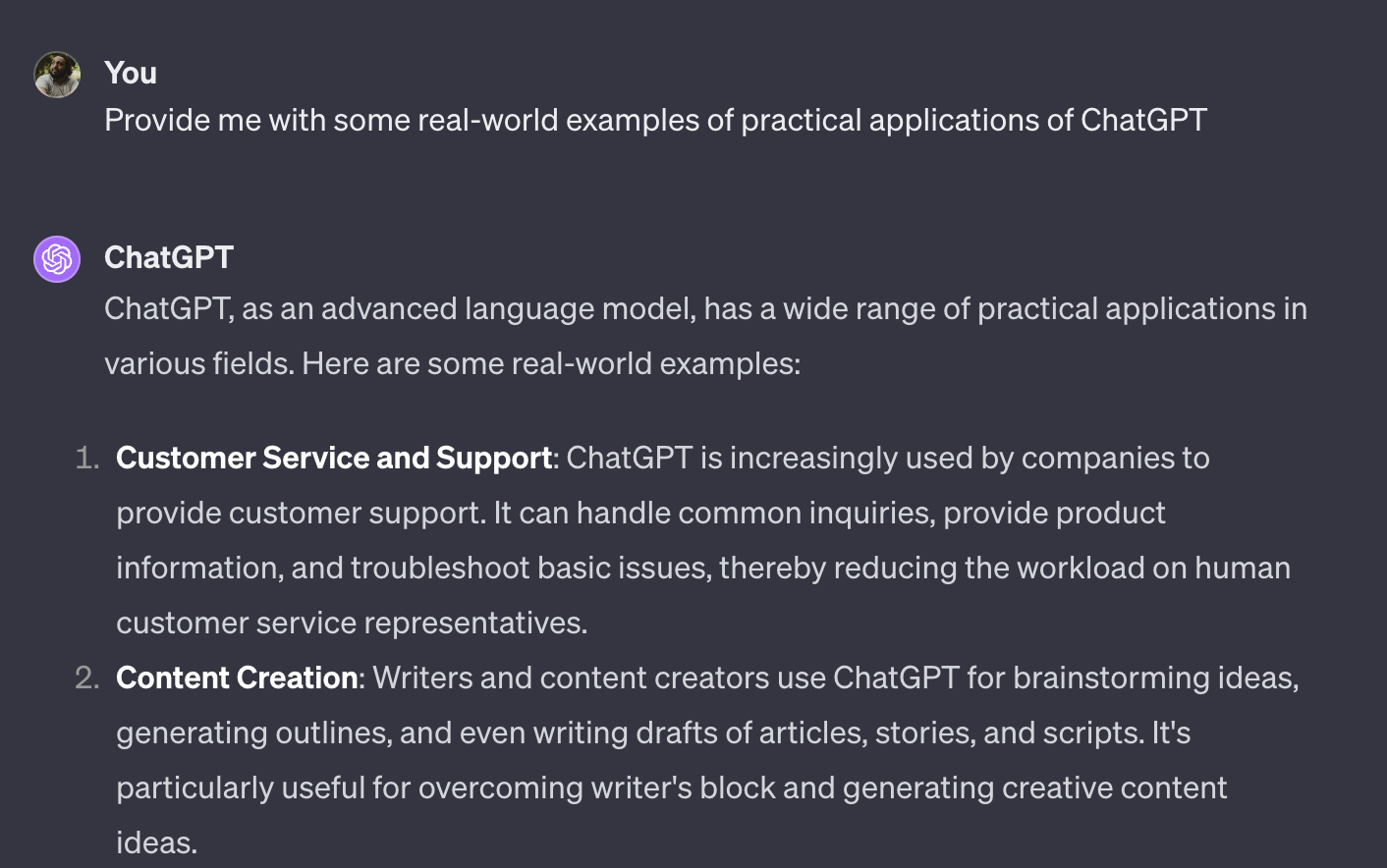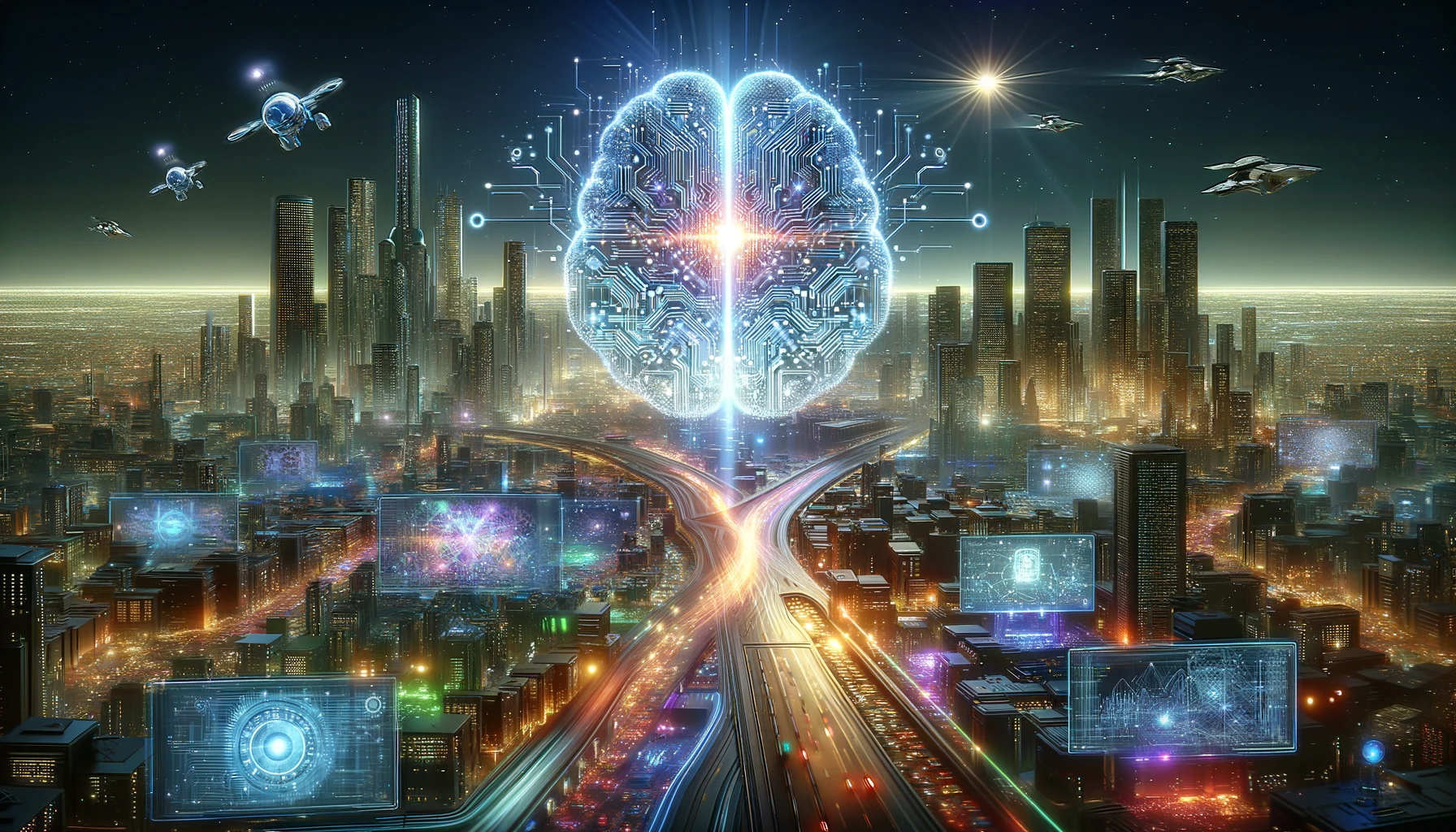Chat GPT was launched on November 30, 2022, developed by OpenAI, and is currently the most advanced Chatbot available. Although it may appear to have its own IQ and conscience, it is actually a language model that was trained using a vast database of texts and data. To put it into perspective, the first version, GPT-1, was trained with 4.5GB of text from 7000 unpublished books of various genres. The latest version, GPT-3, was trained with over 570GB of content, which is almost 130 times larger than the first version. It’s worth noting that ChatGPT uses an even more advanced version of GPT-3 called GPT-3.5.
The purpose of ChatGPT
It’s important to note that ChatGPT isn’t designed to provide trusted information, so it’s not recommended to rely on it for that purpose. However, it can do so much more than you might expect! For instance, as a software developer, I often have to write complex code that I’m familiar with but can’t simply copy and paste due to the unique details of each project. Instead of wasting time on this repetitive task, I can provide the code to ChatGPT and explain what needs to be changed. ChatGPT will then return the revised code, complete with all the necessary implementations. In the tech world, documentation is another tedious task that developers struggle with. But with ChatGPT, I can simply input the key details of my software, mention the project name and purpose, and request documentation. This saves me a lot of time and eliminates the burden of having to create it myself.
I was curious to learn and share more about the practical applications of ChatGPT, so I thought of a simple solution and asked ChatGPT itself to provide us with some real-world examples. It’s worth mentioning that I’m using ChatGPT-4, which is an even more advanced version of the GPT language model.

Here is the full answer from ChatGPT:
- Customer Service and Support: ChatGPT is increasingly used by companies to provide customer support. It can handle common inquiries, provide product information, and troubleshoot basic issues, thereby reducing the workload on human customer service representatives.
- Content Creation: Writers and content creators use ChatGPT for brainstorming ideas, generating outlines, and even writing drafts of articles, stories, and scripts. It’s particularly useful for overcoming writer’s block and generating creative content ideas.
- Education and Tutoring: ChatGPT serves as a tutoring aid for students, helping them understand complex topics, providing explanations for various subjects, and assisting in homework and assignment preparation. It’s also used by educators to create educational content and to design curricula.
- Programming and Code Writing: Developers use ChatGPT to write, review, and debug code. It can provide code snippets, explain programming concepts, and suggest solutions to coding problems.
- Language Translation and Localization: ChatGPT is effective in translating text between various languages, aiding in both personal and professional translation needs. It’s also used for localizing content for different regions and cultures.
- Healthcare Assistance: In the healthcare sector, ChatGPT is used to provide general medical information, suggest preliminary diagnoses based on symptoms (though not replacing professional medical advice), and assist in medical education and training.
- Business Intelligence and Data Analysis: ChatGPT helps in generating reports, summarizing data, and providing insights from business data. It’s used by analysts and managers to quickly understand complex datasets and make informed decisions.
- Entertainment and Gaming: In the entertainment industry, ChatGPT is used to generate ideas for games, write dialogues for characters, and create interactive storytelling experiences.
- Accessibility Tools: ChatGPT aids in creating tools for people with disabilities, such as generating descriptive texts for images for the visually impaired or converting text to speech for those who have difficulty reading.
- Legal and Compliance: In the legal field, ChatGPT helps in drafting and reviewing legal documents, summarizing case law, and providing preliminary legal advice (though it doesn’t replace a lawyer).
- Marketing and Advertising: It’s used to generate creative content for marketing campaigns, write advertising copy, and develop content strategies based on market trends and consumer behavior.
- Personal Assistants and Chatbots: ChatGPT powers conversational agents and personal assistant apps that can handle scheduling, reminders, and answering general queries.
- Mental Health and Counseling: Some mental health apps use versions of ChatGPT to provide preliminary mental health support and to offer coping mechanisms, though they are not a replacement for professional mental health care.
- Travel and Hospitality: ChatGPT assists in creating travel itineraries, providing travel advice, and helping with hotel bookings and customer inquiries in the travel industry.
- Scripting and Automation: It helps in automating repetitive tasks, scripting, and creating workflows in various IT and business processes.
The previous examples demonstrate the diversity of applications for ChatGPT. It is important to understand that ChatGPT is designed to assist and improve human abilities. Its effectiveness depends on how it is utilized and supervised in different situations. Learning about its capabilities raises a question.
Will I lose my job?
I believe that for several years to come, AI will be a companion rather than a direct competitor. It’s important to understand and embrace its capabilities instead of fearing it. However, it’s difficult to determine which jobs will be impacted at this point. We are currently experiencing a period called the AI Boom, which is the rapid evolution of Artificial Intelligence and its applications into the real world. With the advancement of computers and our understanding of AI, more investments are being placed into the field, and much more can be achieved with the evolution of the many technologies that have arisen since the beginning of this era. It’s progressing as fast as the ascension of the internet, and the only certainty is that if you don’t adapt, you will be affected by the deprecation train. According to the article “AI Timelines” from Our World In Data, 352 experts were asked when they believe there is a 50% chance that human-level AI exists. Half of the experts gave a date before 2061, and 90% gave a date within the next 100 years.
It can be alarming to consider the possibility of AI performing human-level work. However, it’s crucial to understand and use the tools we have to prepare ourselves for this process, which seems to be getting closer and closer.
Oh, and be certain that this article was built with the help of ChatGPT (and Grammarly too).






Comments